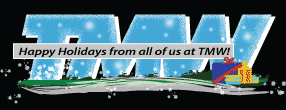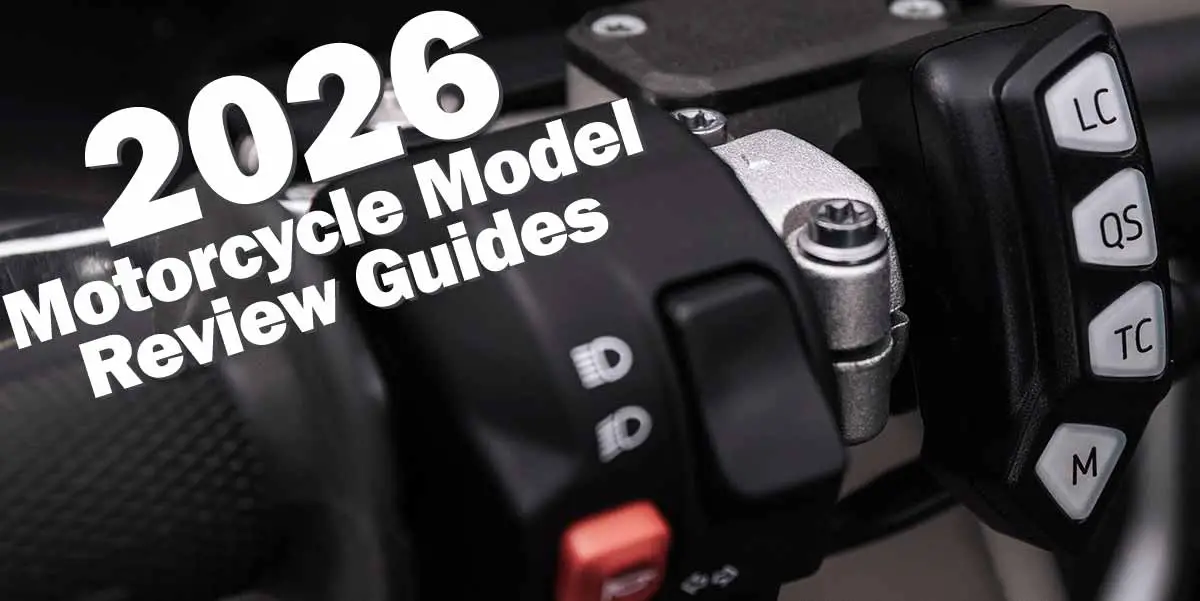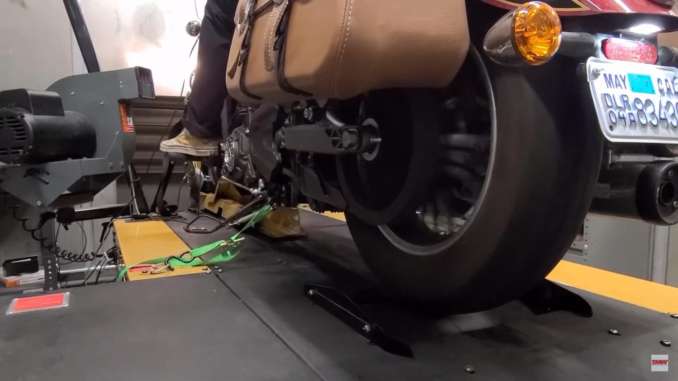
Section Six ½: The Engine Wars – Single vs. Twin vs. V-Twin vs. In-line Four
No matter what motorcycle you ride, you’ll hear it: “My bike is faster / has more horsepower / more torque than yours.” The truth? There is no perfect motorcycle or perfect engine. Each offers its own mix of character and style.
A lot of that character comes from the engine, the true soul of the bike. This is why many riders struggle with electric motorcycles: no sound, no fury, no visceral feel.
Engines are not universally “better” or “worse.” They are more or less suitable for certain types of riding. To understand what’s right for you, you need to know the relationship between horsepower and torque.

Horsepower vs. Torque: The Basics
- Horsepower = Speed (how fast you can ultimately go)
- Torque = Pulling force (how hard you accelerate, especially at low RPM)
Bike A: 100 hp, 10 ft/lbs torque → very fast top speed, but slow to get there.
Bike B: 10 hp, 70 ft/lbs torque → explosive launch, but low top speed.

The Path of Enlightenment
Singles and V-Twins are tuned for torque. In-line fours and sixes are tuned for horsepower. Why? Because horsepower is a function of torque and RPM:
Horsepower = (Torque × RPM) ÷ 5252
At 5,252 RPM, torque and horsepower are always equal. Horsepower is essentially torque delivered at higher RPM. That’s why high-revving engines like in-line fours produce more horsepower, while low-revving twins feel stronger off the line.
Example:
Honda CB750 → 67.7 hp @ 8350 RPM, 45.6 ft/lbs @ 6800 RPM
Yamaha V-Star 1100 → 53.5 hp @ 5900 RPM, 57.8 ft/lbs @ 2500 RPM
- Around town: the Yamaha feels stronger thanks to low-RPM torque.
- On the drag strip: the Honda’s higher redline and horsepower let it pull ahead over distance.
- Quarter-mile times: Yamaha V-Star 1100 → 14.50 sec @ 90.3 mph; Honda CB750 → 12.74 sec @ 103.1 mph.
For everyday riders, torque matters more because most riding happens below 5,500 RPM. That’s why many manufacturers tune for low-end torque.
Dyno Charts
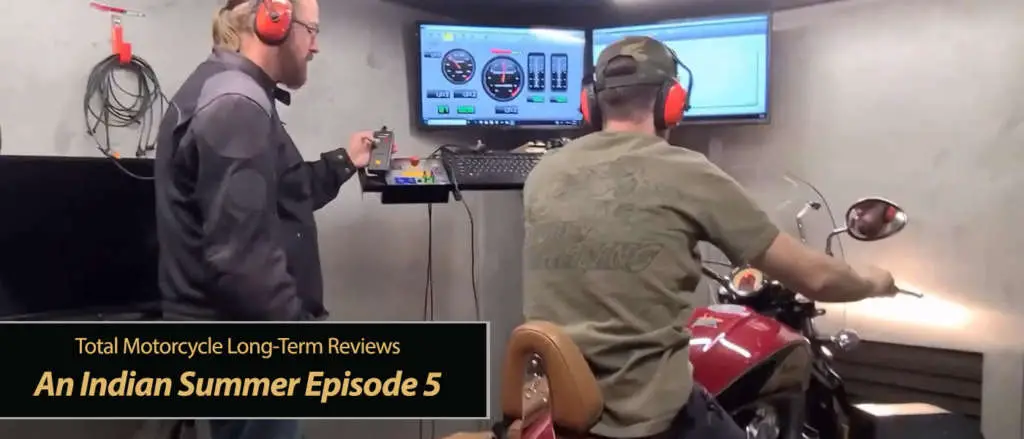
A dynamometer (dyno) measures horsepower and torque under load, producing charts that show how an engine delivers power across the RPM range. Dyno charts let you “see” why bikes feel the way they do.
For example, a V-Twin’s dyno chart shows a strong torque wave at low RPM, while an in-line four’s chart shows a steep climb toward high RPM horsepower.
Machine Learning – A Dyno Does What?
Dynos remove subjectivity. Instead of vague terms like “torque wave” or “freight train,” a dyno gives precise, calibrated measurements. The rear wheel rests on a drum, measuring force while engine RPM is tracked. Some dynos also analyze exhaust gases to measure fueling across the rev range.

Horsepower In, Horsepower Out
Manufacturer specs are usually measured “at the crank,” before drivetrain losses. Real-world dyno testing measures power “at the wheel,” which is what actually reaches the pavement. This explains why dyno numbers are often lower than brochure claims, but far more useful for riders.
2019 Indian Scout – Real Numbers
Horsepower: 100 hp @ 8,100 rpm
Torque: 72 ft-lbs @ 6,000 rpm
These figures place the Scout in a sweet spot: strong midrange torque for everyday riding, with enough horsepower to stretch its legs at higher RPMs. It blends the “torque feel” of a V-Twin with a willingness to rev closer to an in-line four’s character.
Dyno Chart Comparisons
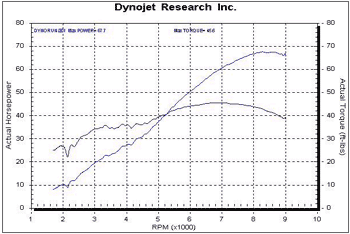
Inline-4s deliver torque in the mid-to-high RPM range, dropping off at the extremes. Horsepower climbs steadily toward redline, making them ideal for high-speed, high-RPM riding.
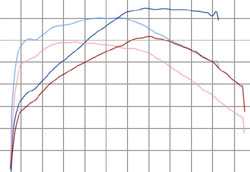
Singles produce torque and horsepower low in the rev range, perfect for dirt, dual-sport, and enduro riding where low-speed control matters more than top speed.
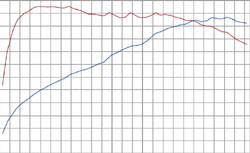
V-Twins emphasize torque at very low RPMs, giving riders strong launches and satisfying roll-on acceleration. Horsepower peaks in the midrange, making them excellent for everyday road speeds.
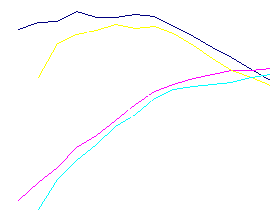
Harley’s V-Twin dyno shows the same torque-heavy character as Yamaha’s, proving that the “feel” of acceleration is more about torque delivery than sound.
Conclusion
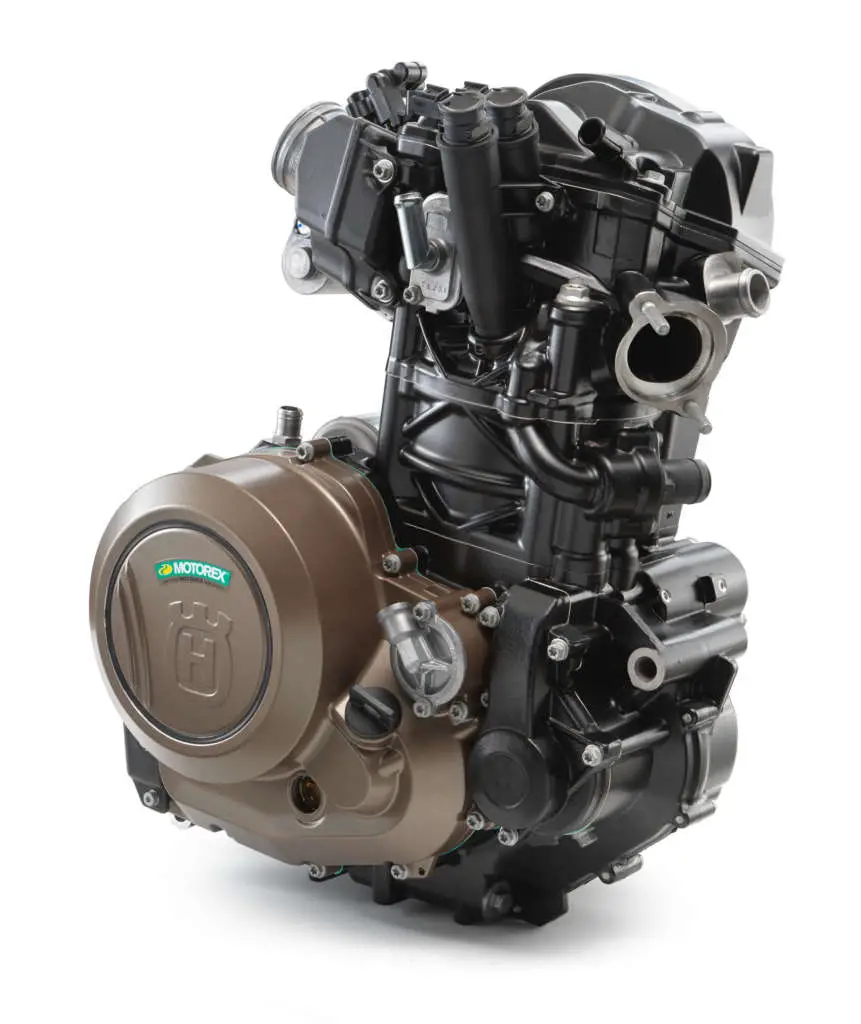
There is no “perfect” engine. Each design is a compromise: singles excel off-road, V-Twins deliver satisfying everyday torque, and in-line fours dominate at high speed. The Indian Scout’s 100 hp and 72 ft-lbs place it in a balanced middle ground, strong enough to thrill, smooth enough to tour.
You could put an in-line four into a cruiser or a V-Twin into a sportbike, but the character would change completely. That’s the beauty of motorcycles: the engine defines the soul, and your choice defines your ride.
